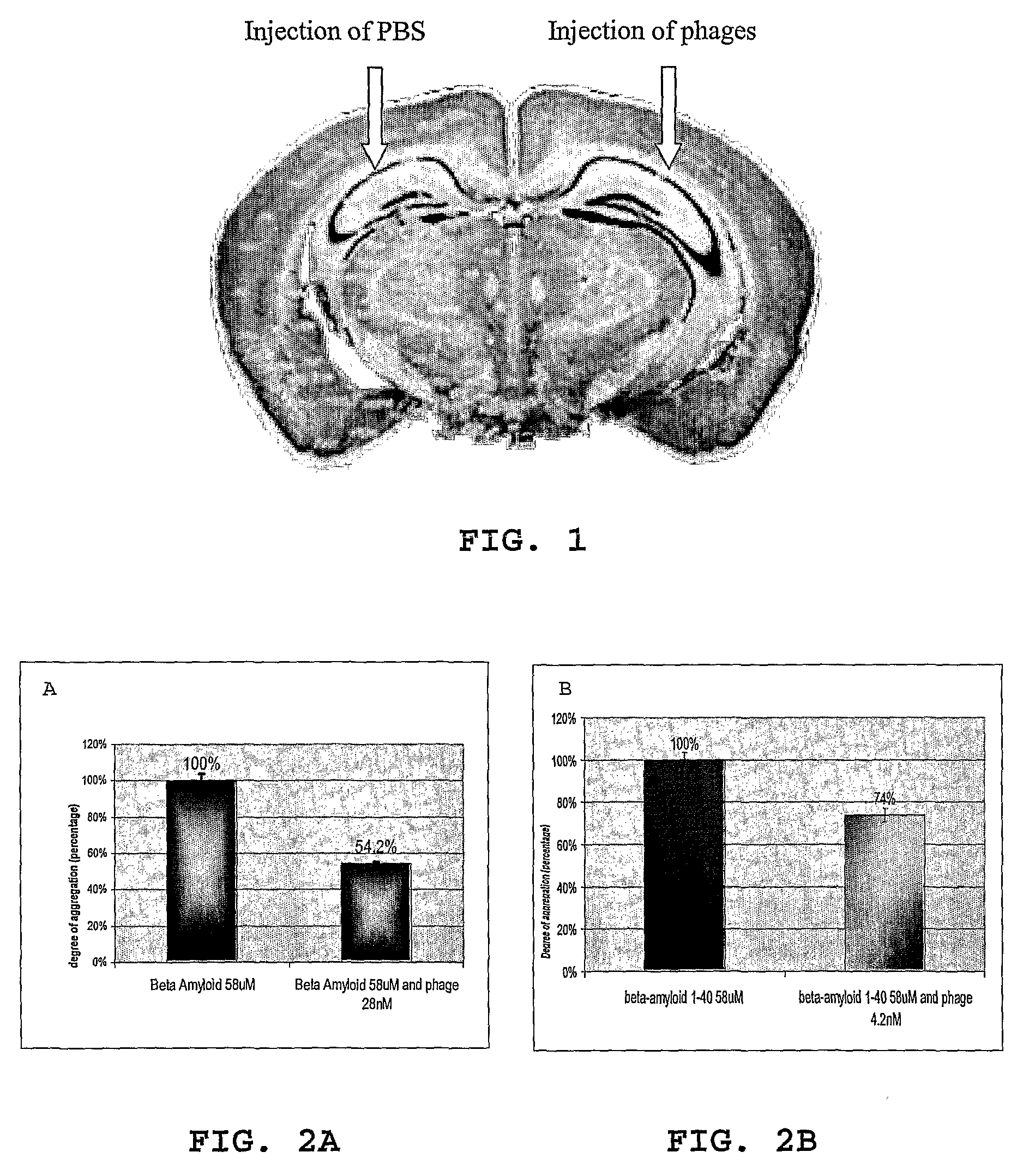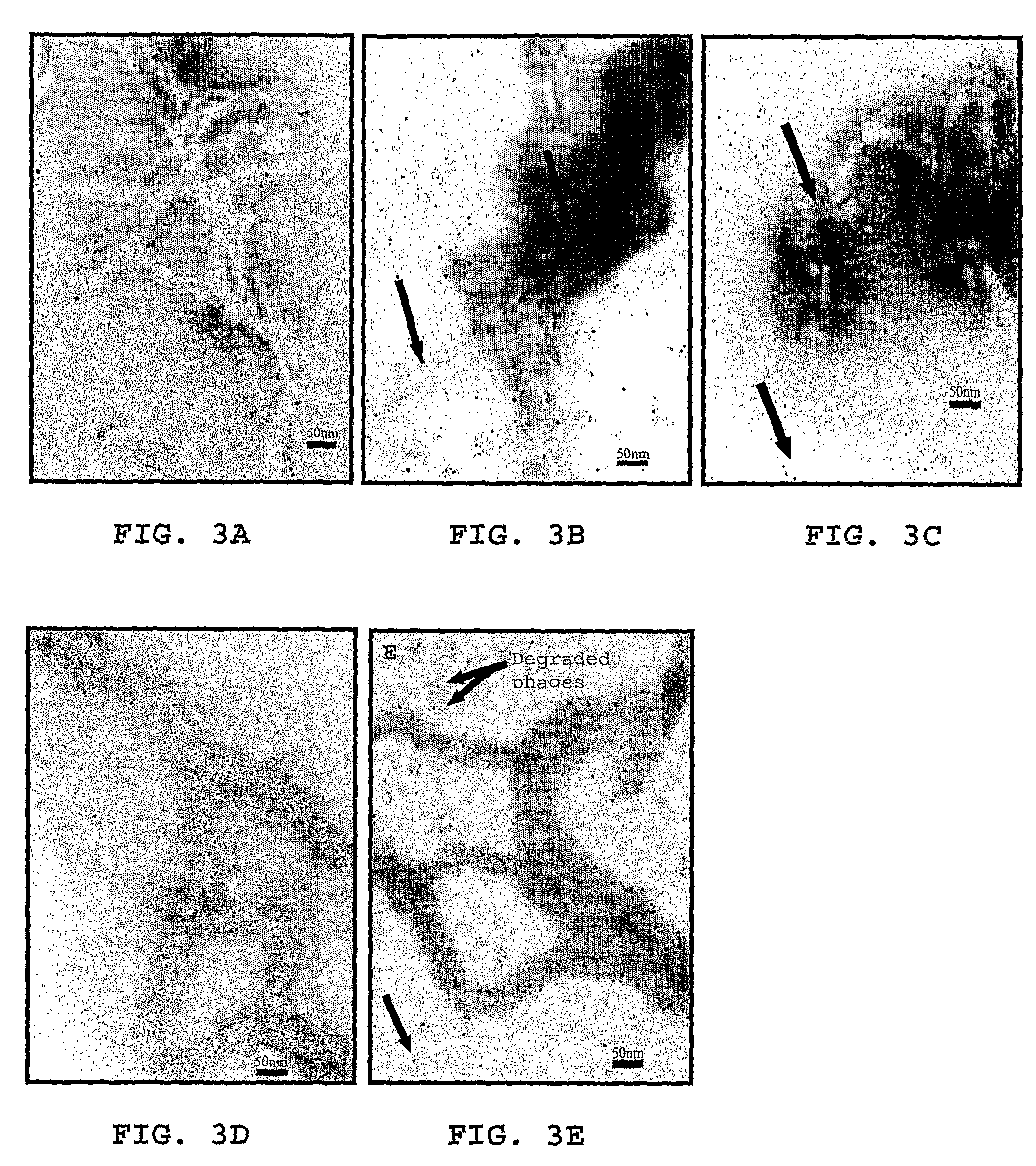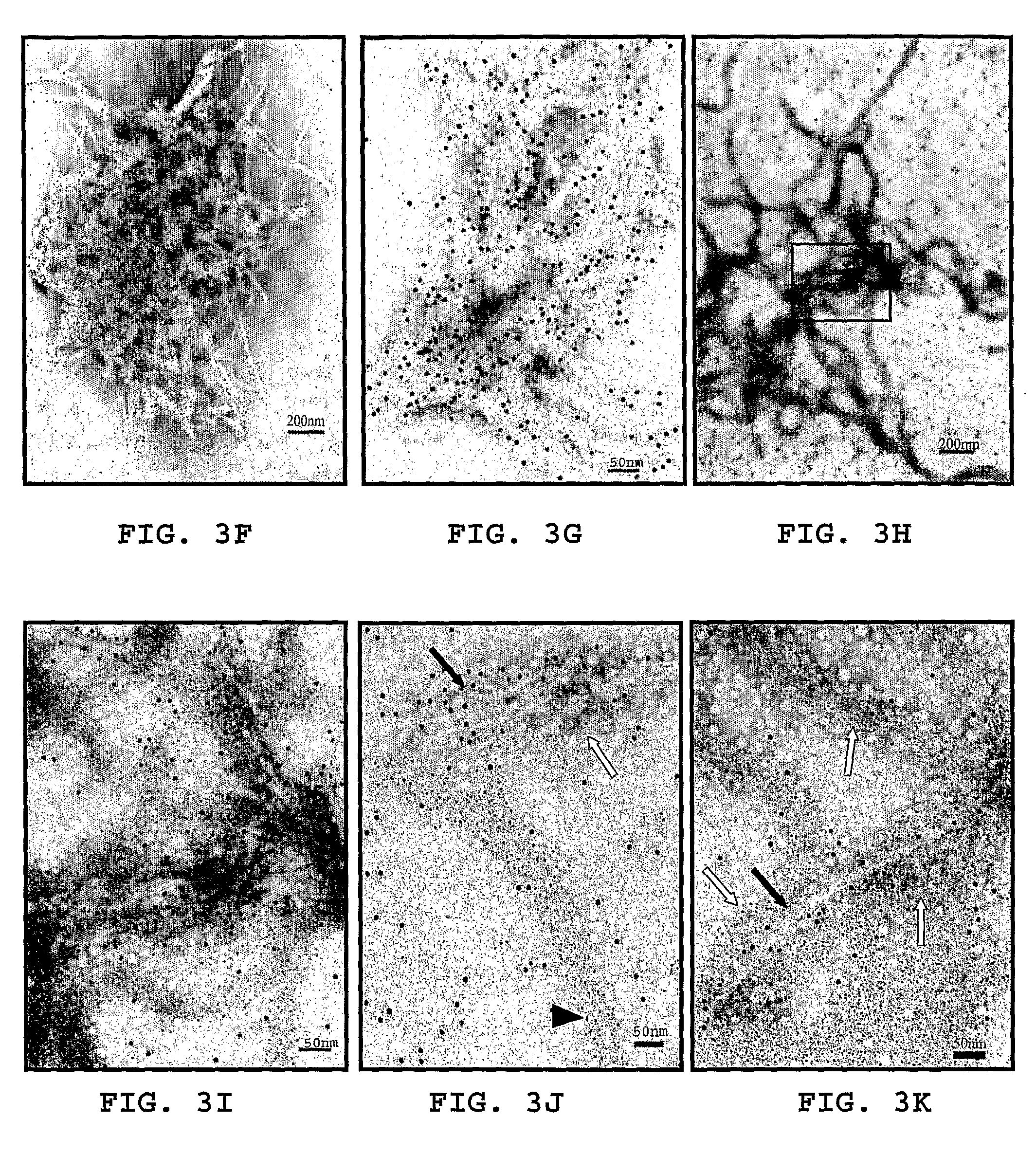Method for treating inflammation associated with amyloid deposits and brain inflammation involving activated microglia
a brain inflammation and amyloid technology, applied in the direction of viruses/bacteriophages, biocide, drug compositions, etc., can solve the problems of abnormal physiochemical properties, more severe abnormalities, and widespread, and achieve the effect of inhibiting or treating inflammation
- Summary
- Abstract
- Description
- Claims
- Application Information
AI Technical Summary
Benefits of technology
Problems solved by technology
Method used
Image
Examples
example
Materials and Methods
Phage Growth and Purification:
[0083]Filamentous phages (M13) were prepared from transformed TG1 cultures in 2YT broth, containing 50 μg / ml kanamycin. Bacterial cells were pelleted by centrifugation, and the clarified supernatant was decanted. Phages were precipitated from the supernatant by adding 20% of the original volume of 20% polyethylene glycol (molecular mass 8000 Da) in 2.5M NaCl and standing at 4° C. for 3 hours. Phages were pelleted by centrifugation (9,000 rpm, 1 hour) then resuspended in 3% of the supernatant volume of PBS. Bacterial residues were removed by further centrifugation at 7000 rpm, and the phages were concentrated again by additional polyethylene glycol precipitation. The pellet was finally resuspended in PBS in 0.001 of the original volume of growth media. (Hart et al, 1994).
Phage Interference with β-Amyloid Aggregation:
[0084]The ability of the phage to prevent βA aggregation and to disaggregate already formed aggregates was analyzed by ...
PUM
 Login to View More
Login to View More Abstract
Description
Claims
Application Information
 Login to View More
Login to View More - R&D
- Intellectual Property
- Life Sciences
- Materials
- Tech Scout
- Unparalleled Data Quality
- Higher Quality Content
- 60% Fewer Hallucinations
Browse by: Latest US Patents, China's latest patents, Technical Efficacy Thesaurus, Application Domain, Technology Topic, Popular Technical Reports.
© 2025 PatSnap. All rights reserved.Legal|Privacy policy|Modern Slavery Act Transparency Statement|Sitemap|About US| Contact US: help@patsnap.com



